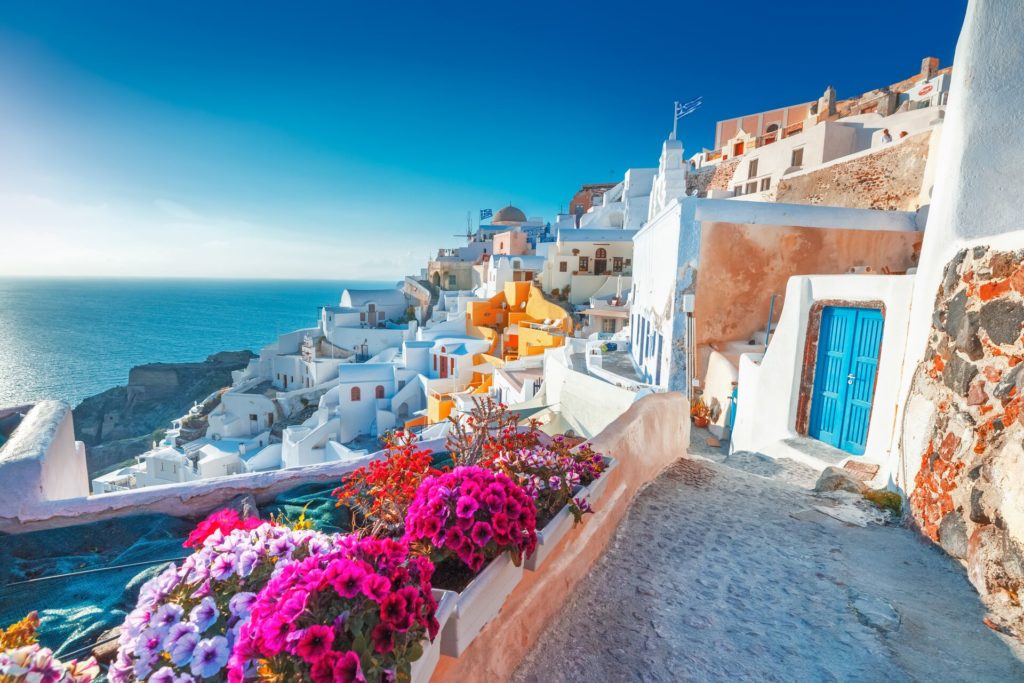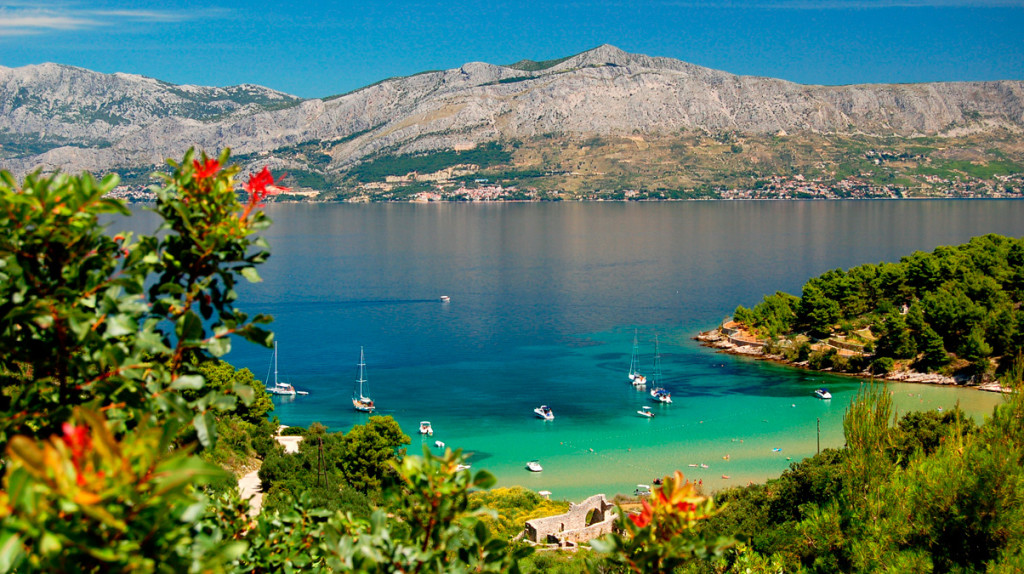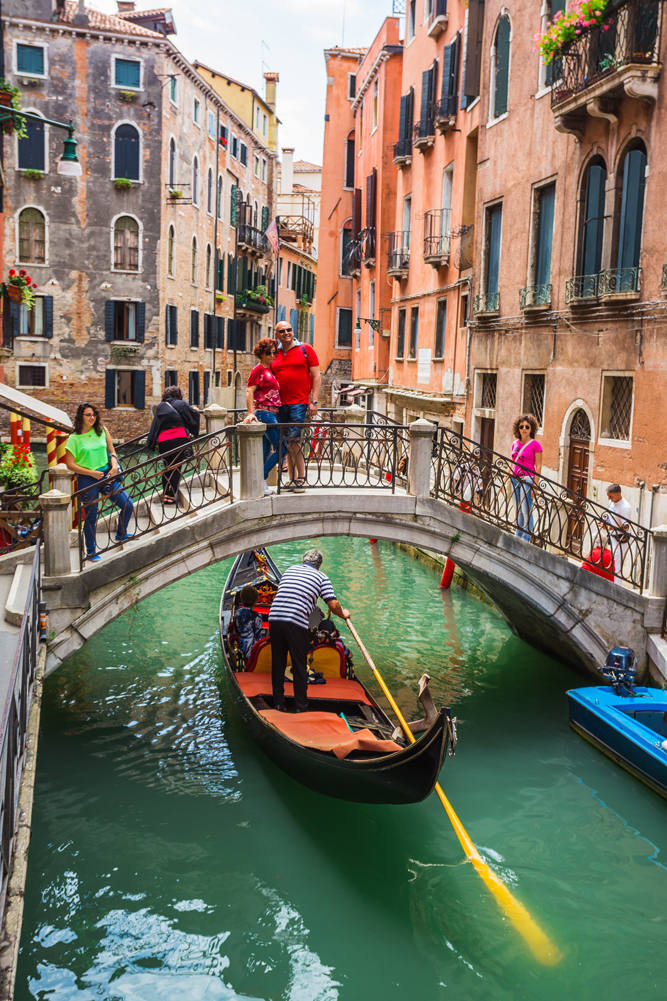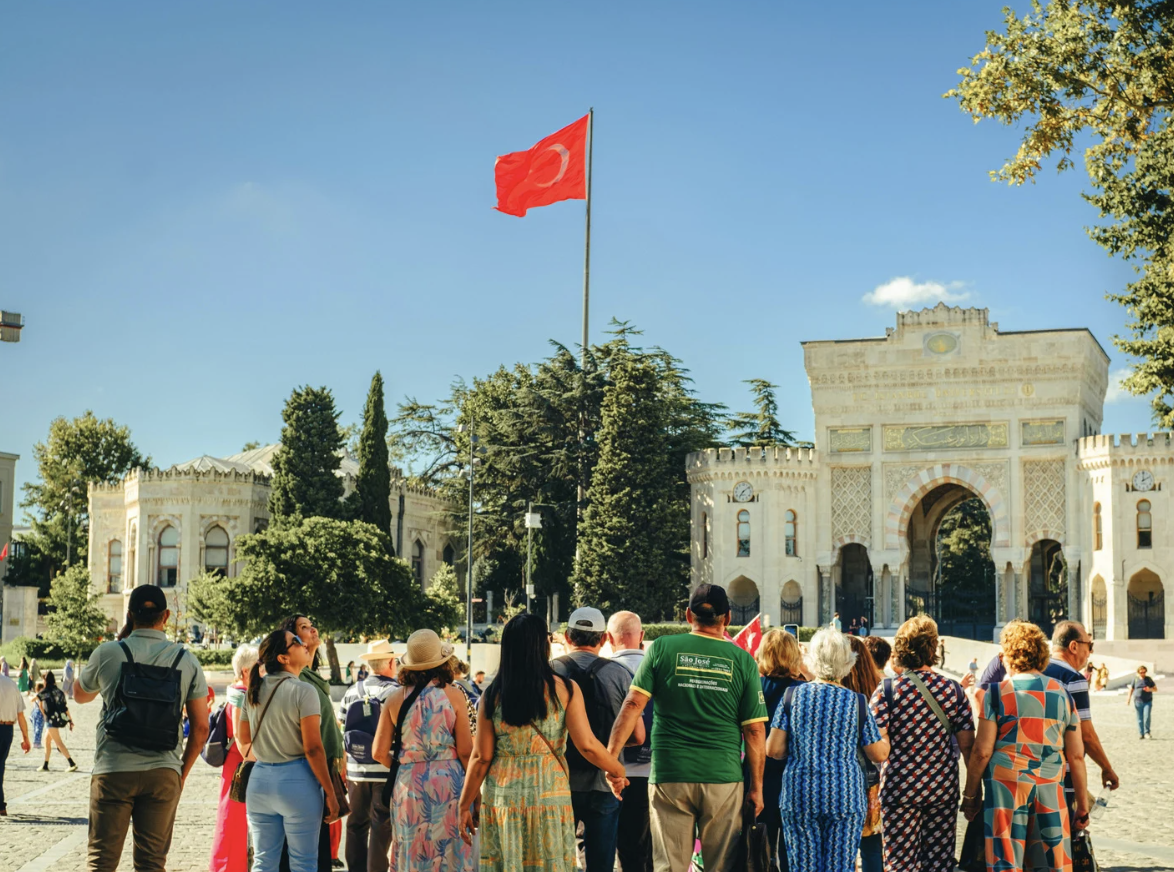Insight Investigates: Overtourism, and What You Can Do to Help
How to Navigate Overtourism in the Age of Social Media
If you’re planning a holiday in 2025, chances are you’ve opened Instagram, TikTok, or YouTube in search of travel inspiration. Social media has become our modern-day compass, pointing travelers toward aesthetic cafés, hidden restaurants and crowd-free viewpoints. But if you’ve seen it, chances are millions of others have, meaning that secret beach may not be so ‘secret’ anymore. With every viral video or trending reel, the same question keeps surfacing: is social media fuelling overtourism, or could it help solve it?

Jen holds the reins to Insight Vacations social media platforms
To unpack this, we spoke to Insight Vacations’ own Social Media Team, Jen Degnan, to explore how content creators, travel brands, and platforms are shaping our collective bucket lists—and what travelers can do to make more conscious, informed decisions.
The “double-edged scroll”
“Social media has become the new search engine,” says Jen. “Many consumers now find what they want and make decisions without ever clicking on a website. Many turn to TikTok or YouTube now to search for travel inspiration, destination ideas and (hopefully) authentic reviews.”
But with the rise of instant exposure comes a flipside. Once-sleepy villages or hidden waterfalls can become inundated with visitors overnight. “There are pros and cons,” Jen explains. “Small businesses benefit when their taverna or gelateria becomes flavour of the month. But it can be at the expense of locals not having the same opportunity to enjoy their old favourite establishments.”
Take Lake Bled in Slovenia, for instance. Known for its emerald waters and fairy-tale island church, the lake has become one of the most photographed spots in Europe thanks to its social media virality. While the region has benefited economically, local infrastructure and natural resources are now being pushed to their limits during peak season. Or the over-touristed stairs of Oia, Santorini—a picturesque spot turned pinch-point for crowds chasing sunset selfies.

Why “hidden gems” are rarely hidden for long
Search #hiddengem and you’ll find millions of posts. But how many of these places are truly under the radar?
“Social media can be useful for finding hidden gems,” Jen says, “but it’s just a question of how long they stay ‘hidden’ once word gets out.” Viral videos can turn a peaceful nature spot into a gridlock in days. And it’s not just about destinations; specific restaurants, viewpoints and markets become hotspots simply by algorithmic luck.
This trend can skew expectations. Many creators avoid showing the queue just behind them or the caution signs out of frame. As travelers, we risk showing up expecting solitude and finding the reality far different.
The solution? Due diligence. “Social-savvy users always take recommendations with a pinch of salt,” says Jen. “They’ll look at multiple videos or reviews before deciding.”

Croatia is full of hidden gem beaches which go viral on social media
Social media as a force for good
Despite its flaws, social media has also democratised travel storytelling. Gone are the days when glossy magazines or guidebooks shaped our entire travel outlook. Now, creators of all backgrounds can share authentic, on-the-ground perspectives—especially those that counter the mainstream.
“Influencers who have built trust with their communities tend to be transparent about destinations,” Jen adds. “People can usually spot inauthentic content and often call it out.”
There’s also a growing trend of “de-influencing” popular spots. Creators now post about why they wouldn’t recommend a certain place, or alternatives that offer a similar experience with fewer crowds.
Take @nastassia_matsu or @herblackcompass on TikTok, whose posts challenge the idea of blindly following viral recommendations.
Some go further, using their platforms to spotlight the impact of tourism on local communities. From highlighting anti-tourist protests to amplifying residents’ concerns, social media has become a tool for education, not just inspiration.
One video shared by @trullallera shows how Venice locals feel about cruise ship congestion, while @danmeetsworldatl explores how to avoid being a “bad tourist” in Barcelona.
“Social media can help raise awareness about overtourism,” says Jen. “It lets travelers research destinations more thoroughly and decide whether visiting will help or harm.”

Save up to $3,000* per couple on your first Premium Tour
Plus receive latest offers, travel inspiration, and discover how your travels will make a positive impact. Together, WE MAKE TRAVEL MATTER®. Subscribe NowConscious scrolling, conscious traveling
So, what can you do to navigate overtourism with social media? First, diversify your research. Don’t rely on one video or a single influencer. Dig deeper: look at hashtags over time, check comment sections, read reviews, and compare real-time footage with travel guides.
Second, consider the season. Off-season travel doesn’t just mean fewer crowds; it often offers more meaningful local interactions. Traveling to Dubrovnik in March rather than July, or heading to the Dolomites instead of the overcrowded Amalfi Coast, can radically shift your experience—and reduce your impact.
Third, use social media to discover alternatives. If a video draws your attention to a major hotspot, look for smaller towns nearby. Inspired by Prague? Consider Brno. Love the idea of Santorini? Try Milos or Paros. In fact, many guided tours (like Insight’s Country Roads itineraries) already do this work for you—intentionally choosing quieter routes that support less-visited communities.
Finally, engage with creators who promote slow, respectful travel. Look for voices who show what it’s really like—not just the aesthetics but the logistics, the people, the context.

Where travel brands come in
Travel companies are also beginning to rethink how they use social platforms. At Insight Vacations, content creators in the “On The Road Content” (OTRC) programme are encouraged to post mindfully. That means showing both the wow-moments and the behind-the-scenes: the empty morning markets, the train rides, the human stories.
Brands are also in a unique position to spotlight lesser-known destinations and shift consumer attention to places that could benefit from more tourism, not less. Whether that’s promoting local artisans in Albania or planning small-group experiences in the Polish countryside, these decisions have ripple effects: supporting local economies and preserving the very authenticity travelers seek.
Some companies have started building tools that highlight travel seasonality or daily visitor data, helping guests make better-informed choices. Others offer sustainability filters for tours, prioritising low-impact travel and community-led experiences.
These approaches help shift the narrative from “must see” to “must understand”. And in the age of overexposure, that might just be the most powerful travel story of all.
Tips to avoid over-visited spots:
- Use geotags thoughtfully—avoid tagging exact coordinates of delicate or small-scale locations
- Choose off-season travel dates when possible
- Opt for guided tours that include lesser-known destinations
- Read up on local tourism caps or restrictions (e.g., Venice’s entrance fee system)
- Respect signs, queues, and resident-only areas
Looking for meaningful travel alternatives? Explore Insight Vacations’ Country Roads tours that take the path less traveled—supporting smaller communities and showing you a different side of your destination.
LIKED THIS POST? SHARE WITH YOUR COMMUNITY




